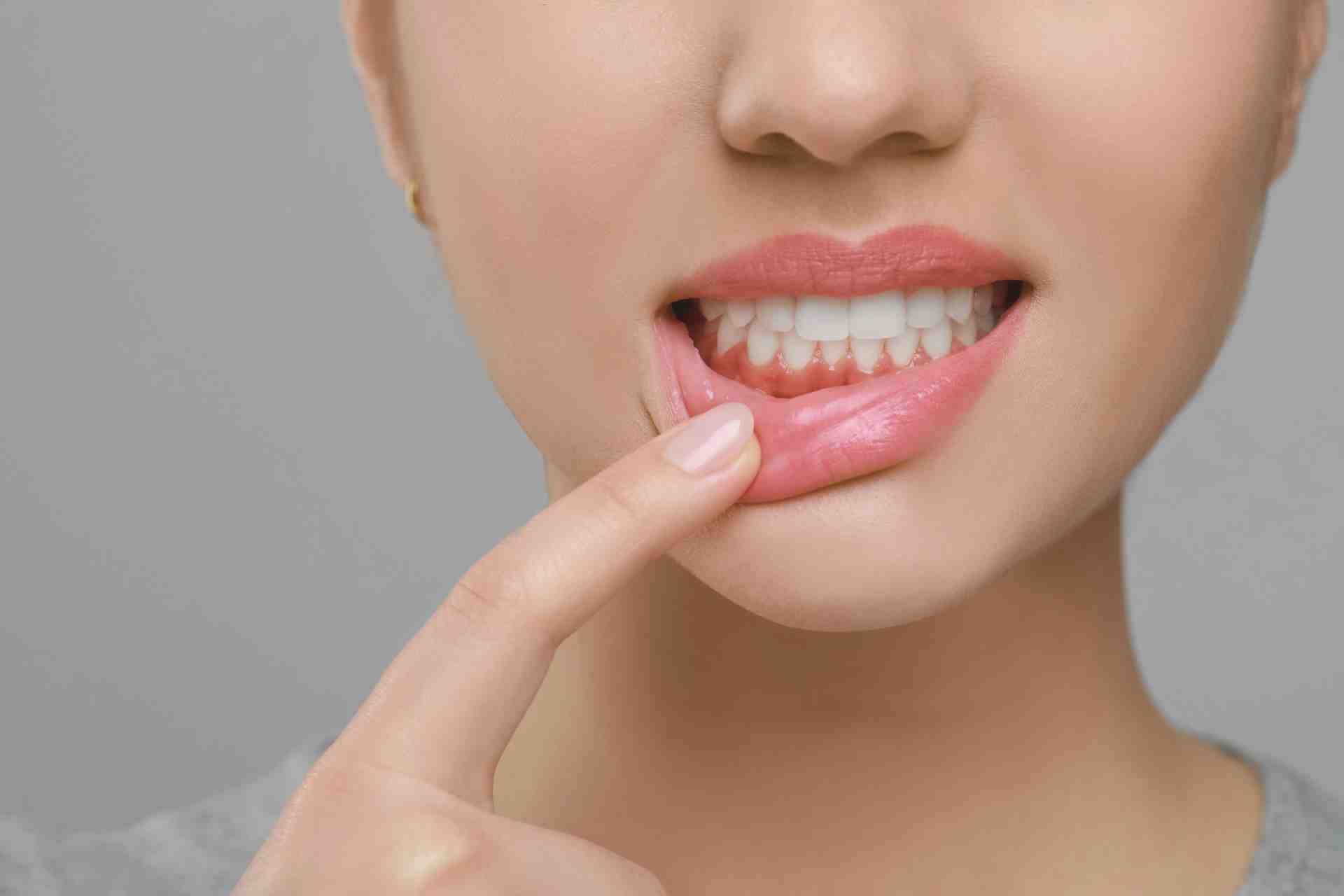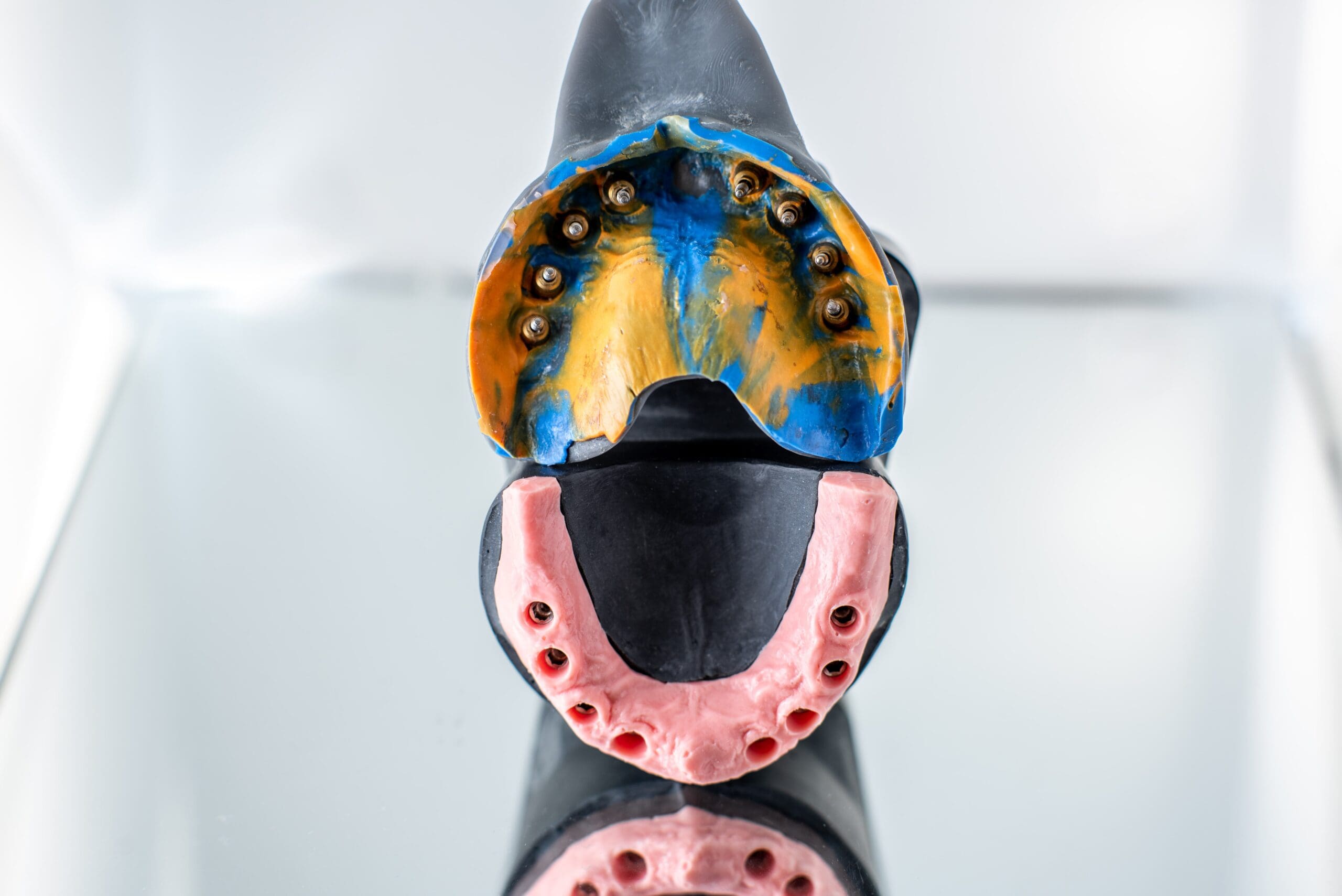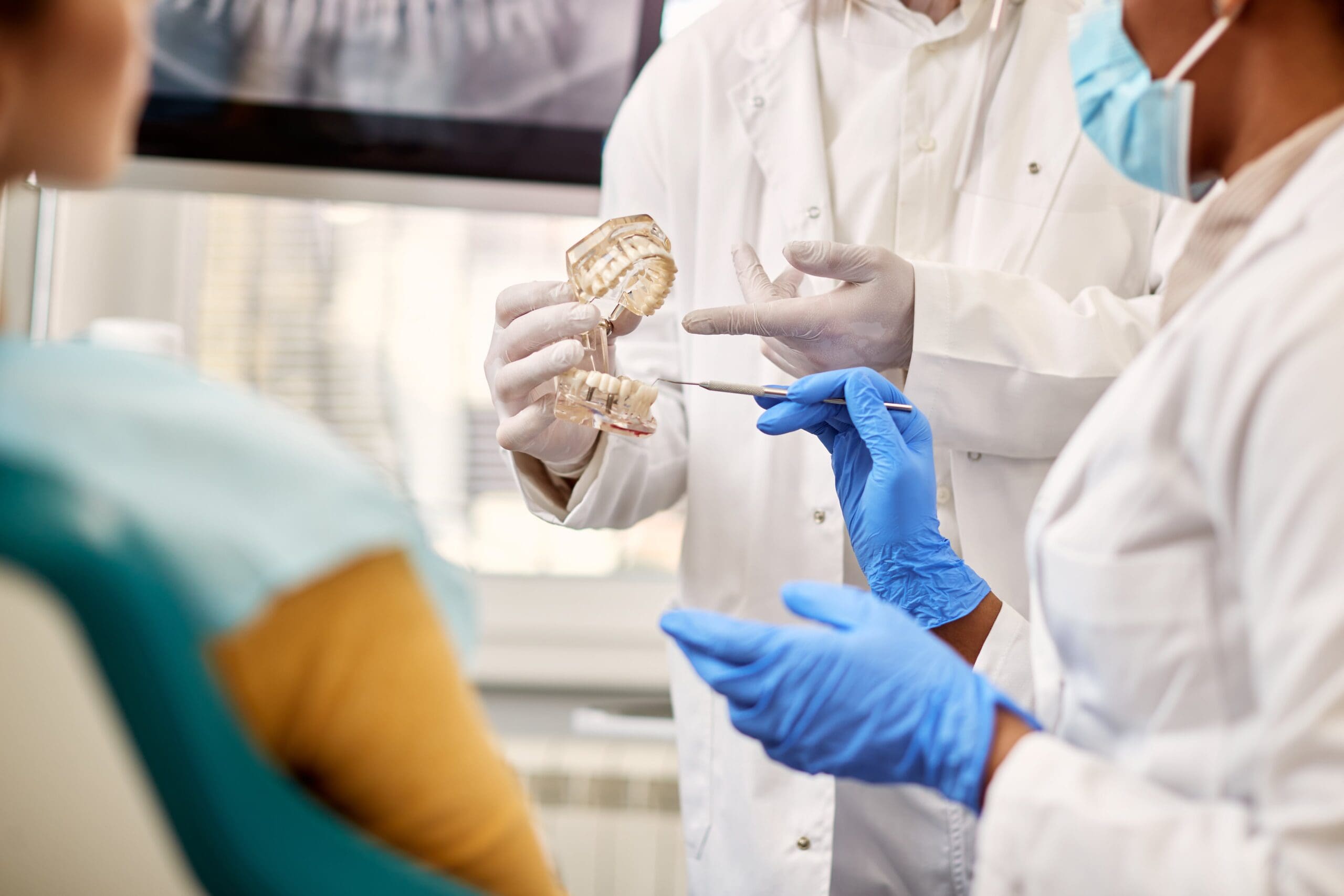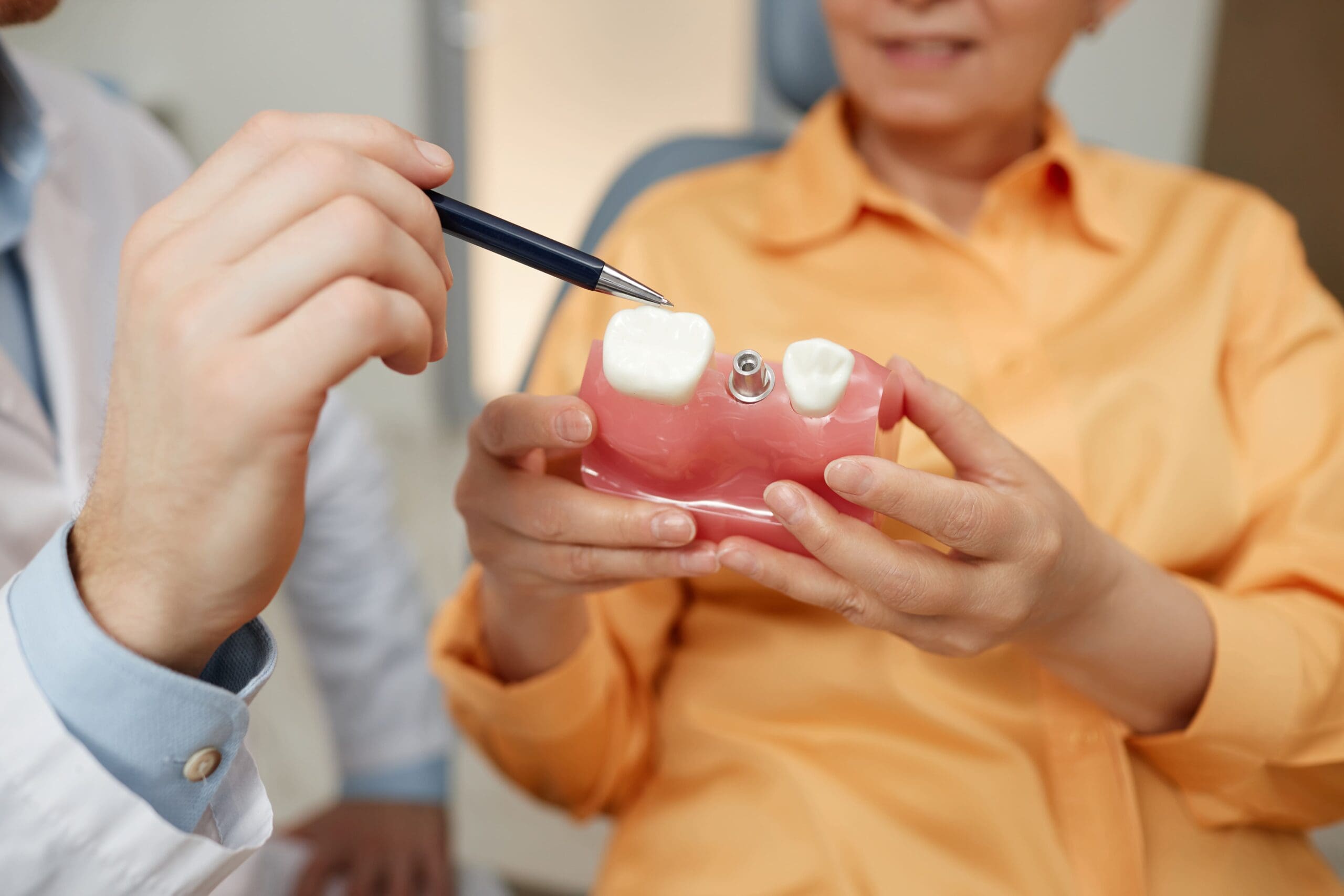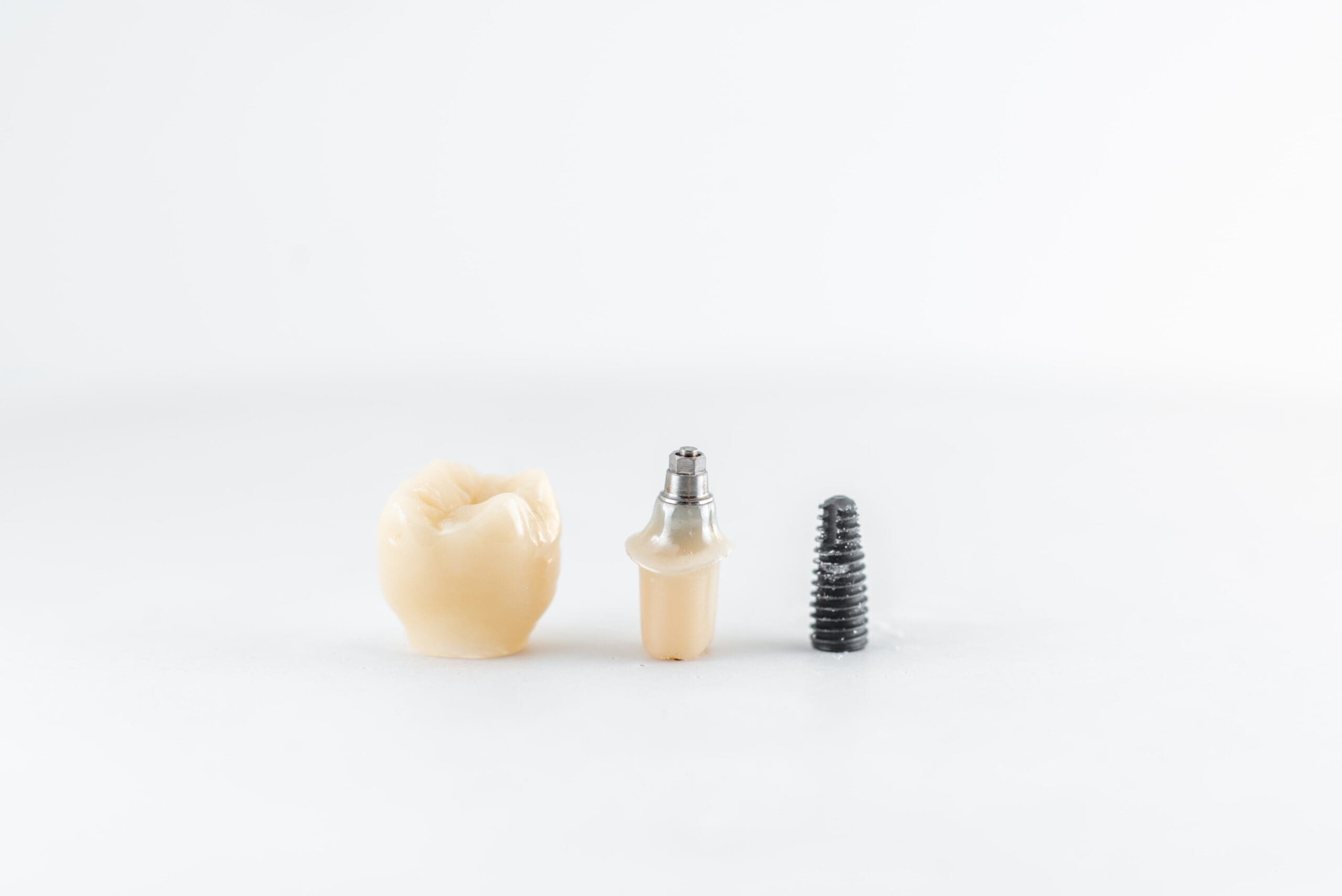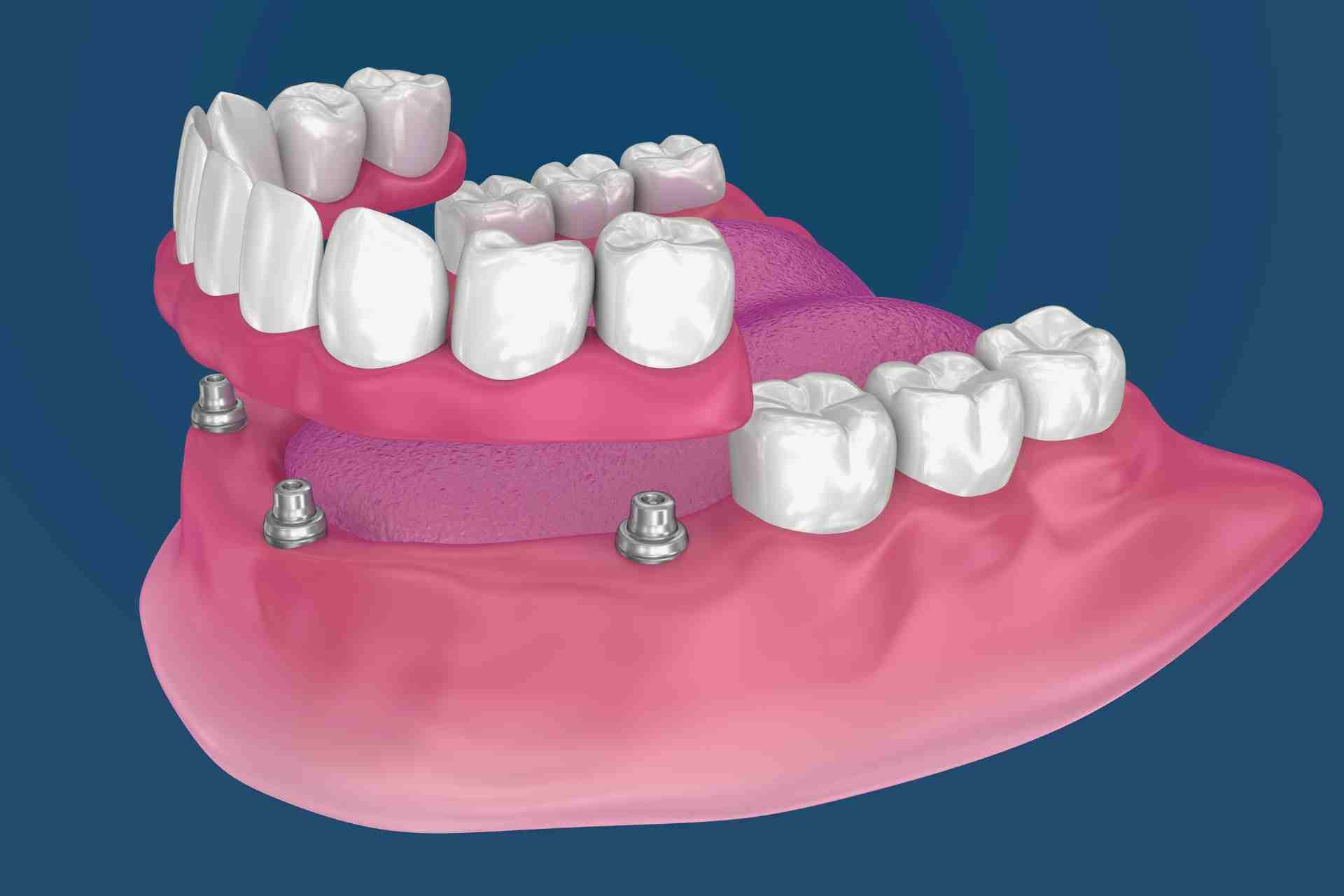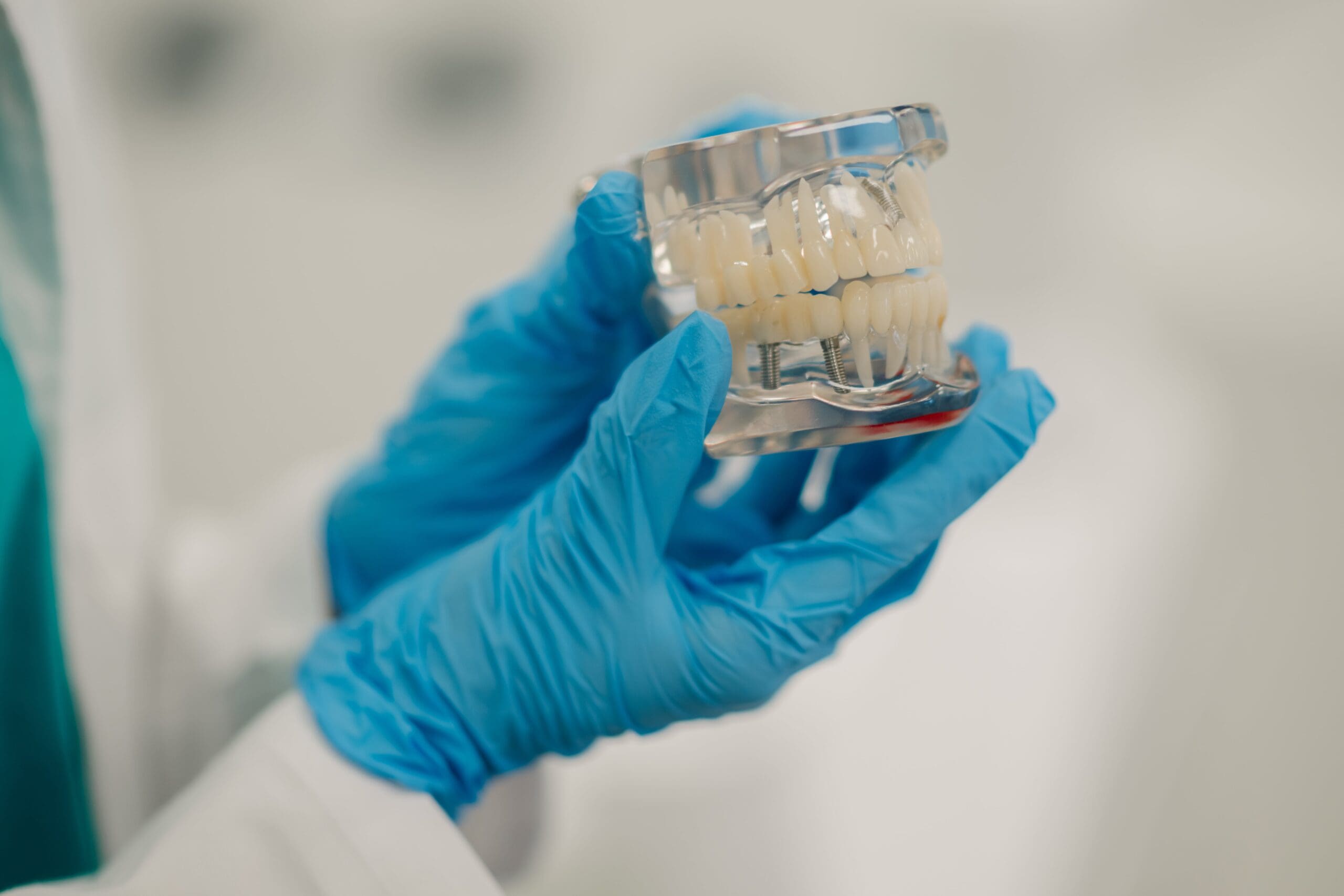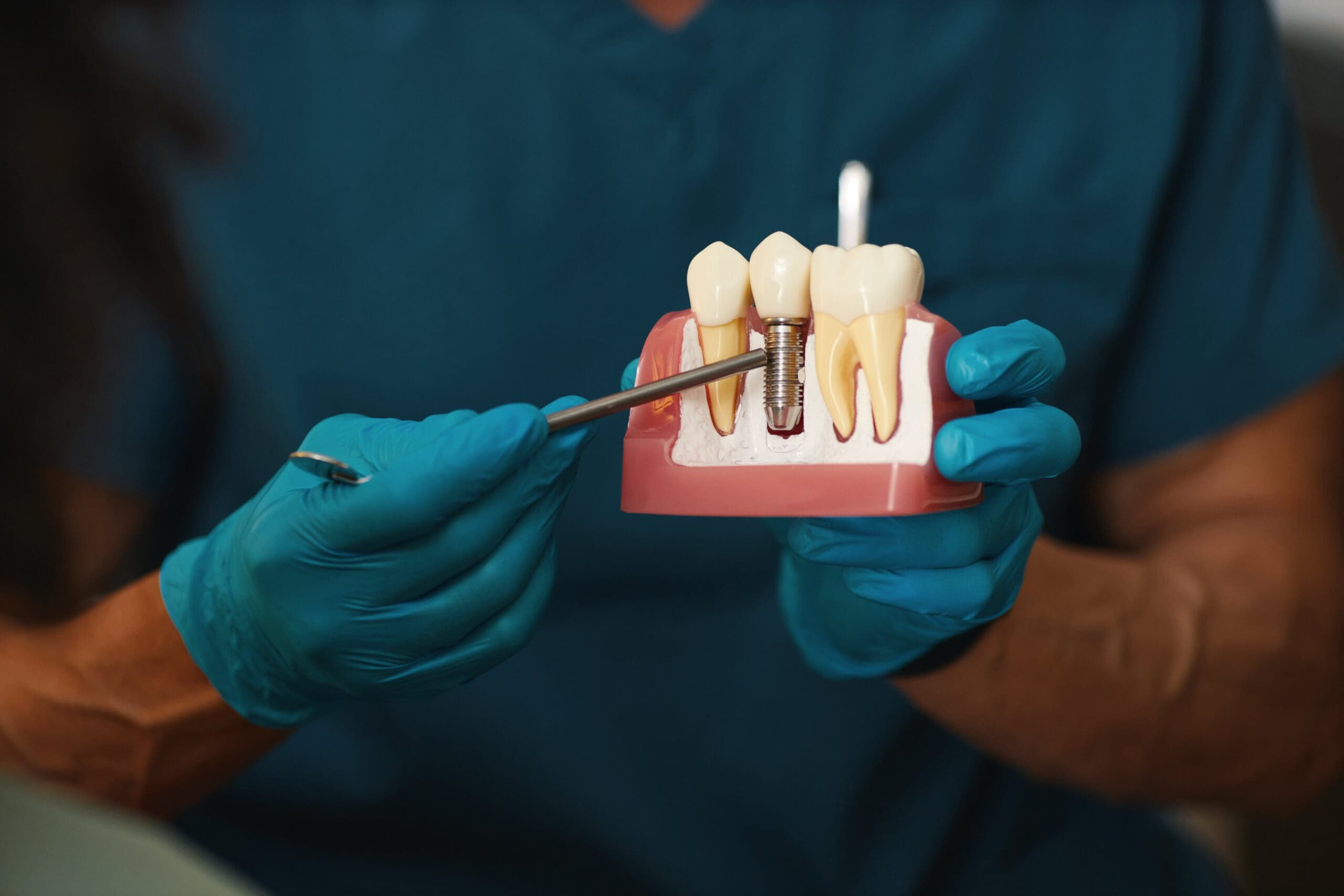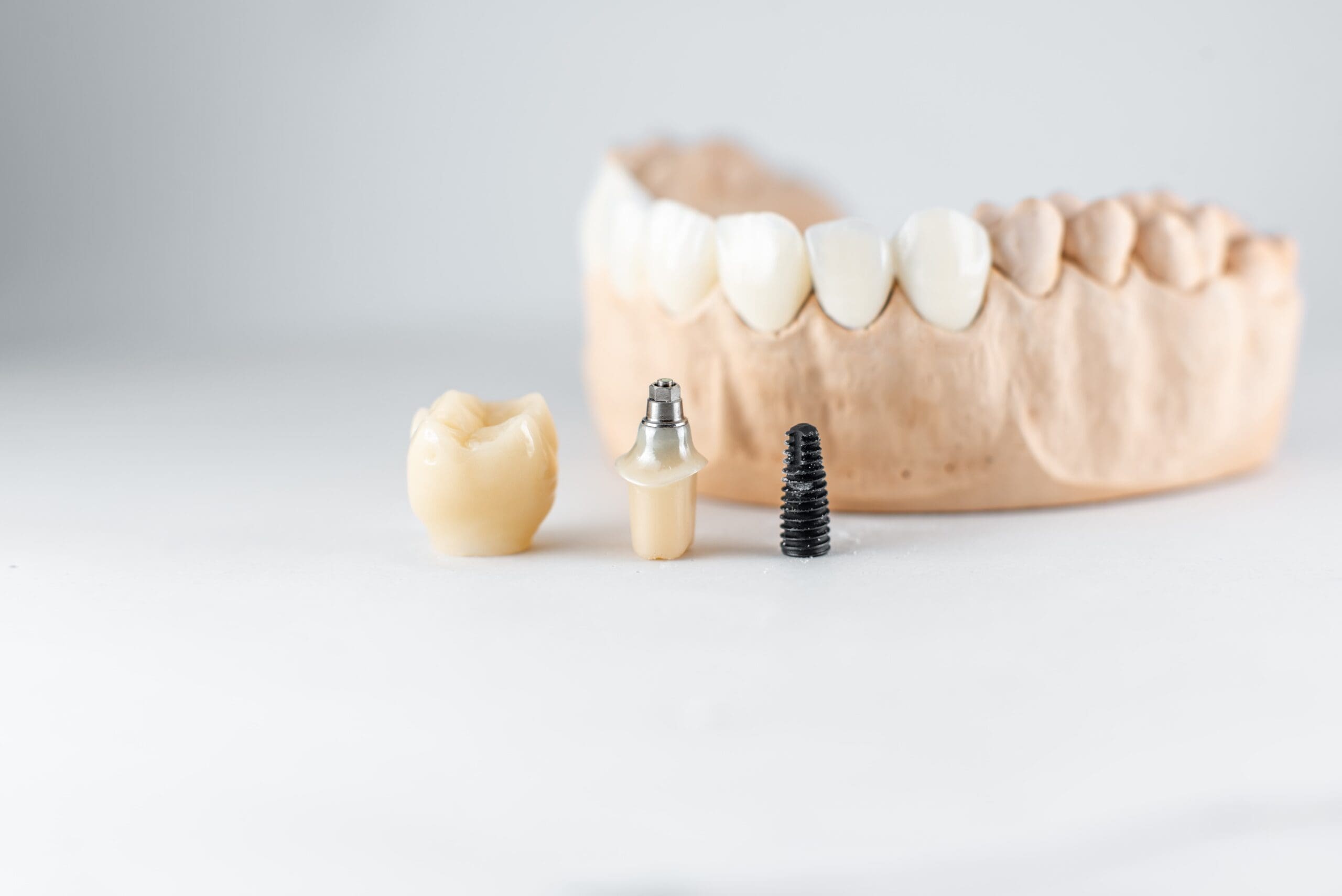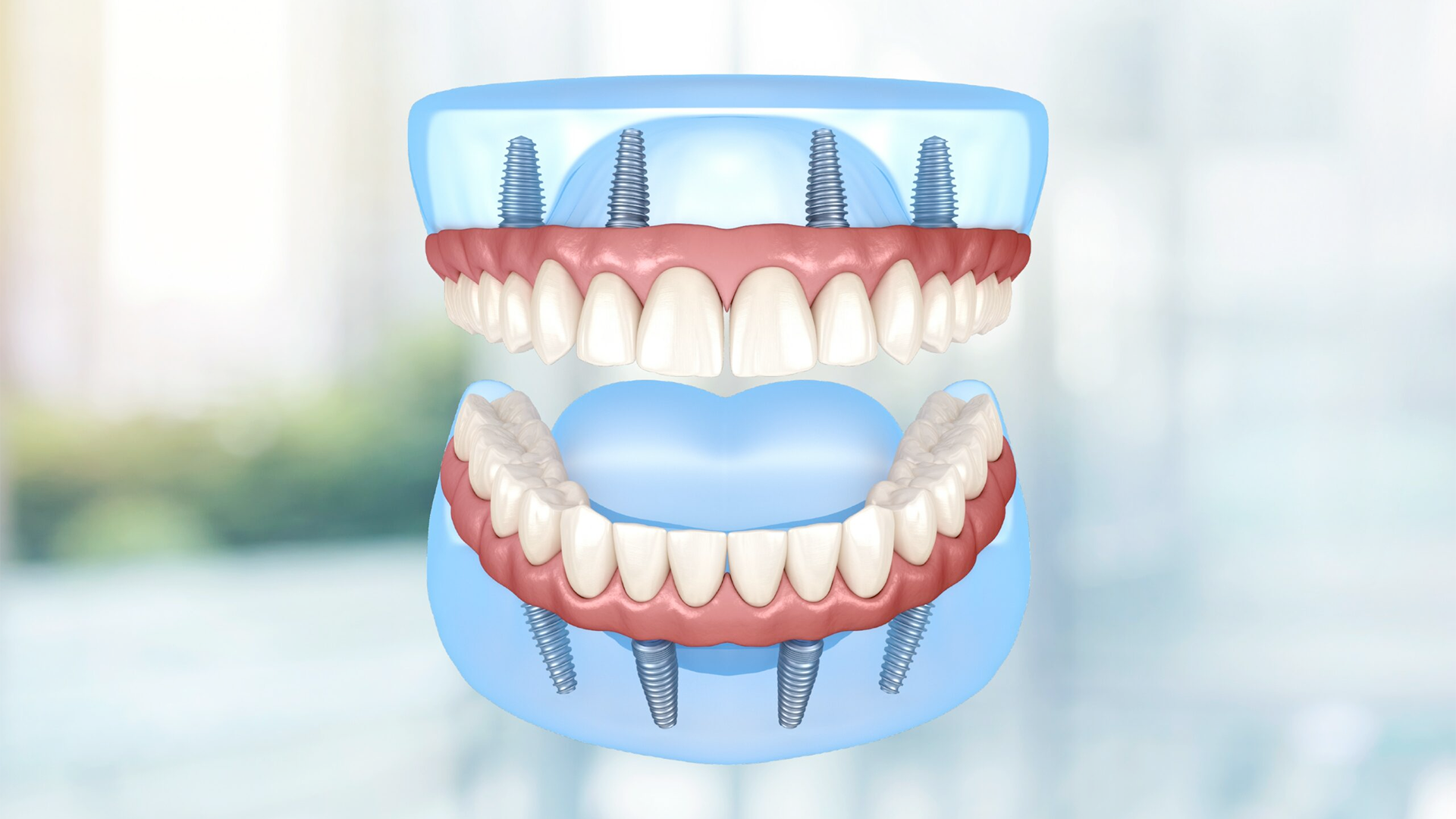
All on X Implant Therapy
All-on-X implants are a modern solution for replacing an entire arch of teeth using as few as four strategically placed implants, designed to restore your smile with precision and durability. Located conveniently in Frederick, MD, our advanced implant technology provides a comfortable, lasting alternative to traditional dentures. What Are All-on-X Dental Implants? All-on-X dental implants are an innovative solution for patients needing a fixed full-arch restoration, a permanent alternative to traditional removable dentures. This advanced procedure uses dental implants to securely anchor a full arch of prosthetic teeth, offering greater comfort, stability, and a natural appearance compared to dentures. The term “X” refers to the number of implants used to support the arch, which typically ranges from four to six depending on individual needs. These implants act like artificial roots, providing a strong foundation designed to last for decades. Unlike removable dentures, All-on-X implants remain fixed in place, giving patients the confidence to eat, speak, and smile without worry. This procedure is ideal for those seeking both function and aesthetic improvement, combining advanced dental technology with personalized care for optimal results. It is well-suited for restoring oral health and quality of life with a solution that feels almost indistinguishable from natural teeth. Why Choose All-on-X Implants? Here’s why this treatment stands out. Key Benefits Permanent solution for missing teeth. Improved bite strength and function compared to dentures. Aesthetics: Provides a natural-looking smile with stable, long-lasting results. Efficiency: Requires fewer implants to support a full arch, streamlining the process. Bone preservation: Prevents future bone loss with strategically angled implants designed for optimal support. How They Compare to Traditional Implants and Dentures Cost: All-on-X implants offer a cost-effective solution by using fewer implants for complete arch restoration, unlike traditional single implants. Stability: More stable and secure compared to removable dentures, which can shift or loosen over time. Treatment time: Faster results with All-on-X implants due to their streamlined procedure. The All-on-X Implant Process at Our Frederick Office Diagnostic Surgery Same Day Results Final Restoration Diagnostic During your initial consultation, Dr. Towe will determine if All-on-X is the appropriate treatment for you based on your current health and specific smile goals. She will then plan each step of your treatment digitally using 3D CT scans and intra oral scans. Virtual pre-surgical planning the procedure allows us to achieve consistent and ultra-precise results. Dr. Towe only uses high-quality implant posts and recommends using the longest-lasting and most aesthetically appealing restoration materials for your final smile. Surgery Dr. Towe relies on her extensive expertise and experience to complete smile-transforming surgeries every day. After making you comfortable with IV sedation, she’ll remove any remaining decayed teeth before placing a minimum of four durable titanium posts per jaw. These titanium posts are placed in strategic positions to support a full jaw of teeth. Same Day Results After the titanium posts are placed, Dr. Towe will work with your general dentist to attach a temporary bridge to the posts so that you can leave with a full mouth of beautiful and securely fixed teeth that same day! These will function just like real teeth until you receive your final bridge. Final Restoration After checking that your implants have successfully healed in the jaw bone, your temporary bridge will be replaced with a custom-designed and durable final bridge. The final bridge provides long-term function and beauty. You will finally have a brand new smile! Who is a Candidate for All-on-X? We understand that every patient’s situation is unique. All-on-X implants are an innovative solution designed for specific needs, particularly for: Patients missing most or all of their teeth who are looking for a permanent, reliable replacement. Denture wearers seeking a more stable and comfortable alternative to traditional dentures. Individuals with some degree of bone loss, as angled implants can often bypass the need for extensive grafting. Cost of All-on-X Implants The cost of All-on-X implants can vary depending on several factors, including: Number of implants required to securely anchor the restoration. Bone grafting needs, which may be necessary for patients with insufficient bone structure. Type of restoration selected, such as material and design specifics. We understand that this is a meaningful investment, which is why we offer flexible financing options and payment plans to make advanced dental care more accessible. Our goal is to help you achieve a restored smile while staying within your budget. Why Patients Trust Advanced Implants & Periodontics Proud to be a trusted name in Frederick, MD for advanced dental care, our practice is led by highly skilled periodontists with advanced training in the latest techniques and technology, ensuring every patient receives exceptional care. Beyond expertise, our warm and supportive team is dedicated to creating a comfortable, patient-focused environment, so you always feel at ease. Our emphasis on precision and compassion ensures that you’re in capable, caring hands. Frequently Asked Questions How many implants are used in an All-on-X treatment? The “X” in All-on-X refers to the number of implants placed, usually four to six per arch. The exact number depends on your bone structure and treatment needs. Will I have teeth the same day as the surgery? In most cases, yes. Many patients leave their procedure with a set of temporary teeth attached to the implants, so you never go without a smile. How long does it take to heal after All-on-X implants? Initial healing usually takes about 1–2 weeks, but full integration of the implants with your jawbone can take several months. During this time, you’ll wear temporaries before your final custom prosthetic is placed. Are All-on-X implants painful? Most patients report minimal discomfort thanks to sedation options and precise surgical techniques. Any soreness after surgery is typically managed with medication and eases quickly. How long do All-on-X implants last? With proper care, All-on-X implants can last decades or even a lifetime. Regular checkups, cleanings, and good oral hygiene are essential for long-term success. What should I expect if I get all-on-X dental implants? Your damaged teeth will be extracted to make room

